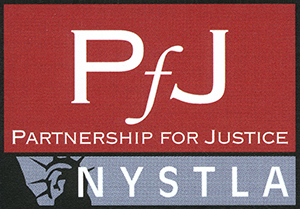Dangerous Drugs: Fluoroquinolone Side Effects
Posted on December 2nd, 2013 by Oddo & Babat, P.C.
Used to treat mild to moderate bacterial infections, fluoroquinolones
are among the most highly prescribed medications in the United States.
When 33 year old Manhattan resident and Website Manager for the City College of New York Lloyd Balch sought medical attention for a fever and cough in April 2013, his doctor deduced from a chest x-ray that he had a mild case of pneumonia. Bach was given a popular antibiotic, Levaquin and shortly thereafter developed severe pain in his joints and vision problems. Balch continued taking the medication and soon became unable to walk uphill and see clearly. He experienced ringing in his ears, tingling in his hands and feet, uncontrollable shaking and muscle spasms. Doctors who have studied the risks of Levaquin say reactions like Balch’s are not unusual for users of fluoroquinolone antibiotics.
Used to treat mild to moderate bacterial infections, fluoroquinolones are among the most highly prescribed medications in the United States. In 2011, the US Food and Drug Administration (FDA) reported approximately 23.1 million prescriptions, with an additional 3.8 million hospital patients treated with them via injection. Fluoroquinolones include Cipro, Avelox, Noroxin and Levaquin – the latter being the bestselling antibiotic in 2010. By 2012, however, Levaquin was also the subject of more than 2,000 lawsuits by patients who had experienced severe side effects.
Peripheral neuropathy is a condition that causes damage to the nerves that send information from the brain to the spinal cord and throughout the rest of the body.
In August 2013, the FDA issued a notice requiring drug labels and medication instructions for all fluoroquinolone antibacterial drugs to more accurately describe the serious side effect of peripheral neuropathy (PN) experienced by many users. According to the Mayo Clinic, Peripheral neuropathy is a condition that causes damage to the nerves that send information from the brain to the spinal cord and throughout the rest of the body. Usually occurring in the arms or legs, symptoms include pain, tingling, numbness or changes in sensation of pain, temperature or body position.
Development of PN is only a risk when fluoroquinolones are taken orally or by injection; topical formulations applied to the eyes or ears are not known to cause nerve damage. Symptoms of PN may occur soon after the drug is taken and can last for months or years after use is suspended or may even be permanent.Fluoride, a known neurotoxin, is a central component of fluoroquinolones and can penetrate into very sensitive tissues, entering the brain and damaging the central nervous system. Doctors at the Center for Disease Control and Prevention have expressed concern that fluoroquinolones are often prescribed unnecessarily to patients without considering less risky alternatives. Meant for serious, life-threatening bacterial infections, they are frequently prescribed for earaches, bronchitis, urinary infections and other ailments that may go away without treatment or with less potent drugs.
…patients taking fluoroquinolone antibiotics were five times more likely to suffer potentially blinding retinal detachment, kidney failure and tendonitis.
The risks don’t end with nerve damage: In an April 2013 study at the University of British Columbia, Pharmacological Epidemiologist Mahyar Etminian found that patients taking fluoroquinolone antibiotics were five times more likely to suffer potentially blinding retinal detachment, kidney failure and tendonitis. Dr. Etminian expressed concern as well, asserting that the drugs are overused by “lazy doctors who are trying to kill a fly with an automatic weapon.” The American Thoracic Society has issued drug use guidelines that specify fluoroquinolones should not be prescribed as a go-to treatment for non-life threatening conditions, including community-acquired pneumonia. Had Lloyd Balch and other patients harmed by fluoroquinolones known about the risk factors and alternatives, they may have requested a different treatment.
When fluoroquinolone antibiotics are offered for mild conditions
like sinus, urinary tract or ear infections
without any proposed alternatives,
physicians may be negligent in prescribing them
and may be found responsible for resulting pain and suffering.
…it is also a health care professional’s responsibility to provide this information.
Many patients don’t see the mandated FDA warnings on packaging and are not notified by doctors of the potential side effects. While it is always wise to ask about associated risks and possible alternatives when starting drug treatment, it is also a health care professional’s responsibility to provide this information. To avoid further injuries and additional lawsuits, drug manufacturers are now warning patients about fluoroquinolones but, given their potential to harm, it is important that physicians also take the time to discuss their use with patients.When fluoroquinolone antibiotics are offered for mild conditions like sinus, urinary tract or ear infections without any proposed alternatives, physicians may be negligent in prescribing them and may be found responsible for resulting pain and suffering.
Oddo & Babat specializes in Medical Malpractice and Medical Negligence claims. Contact us today or call or call us at 212-642-0950 to arrange an appointment with one of our experienced New York attorneys.


 I consulted with David the first time a couple of years ago on a serious matter that affected a very close member of my family. Not expecting a good experience from this serious situation coupled with an attorney consultation, the entire thing surprised me as it was pleasant, professional, and completely successful. We found him clear, direct, generous and extremely knowledgeable throughout the process. I give my very strongest recommendation
I consulted with David the first time a couple of years ago on a serious matter that affected a very close member of my family. Not expecting a good experience from this serious situation coupled with an attorney consultation, the entire thing surprised me as it was pleasant, professional, and completely successful. We found him clear, direct, generous and extremely knowledgeable throughout the process. I give my very strongest recommendation








